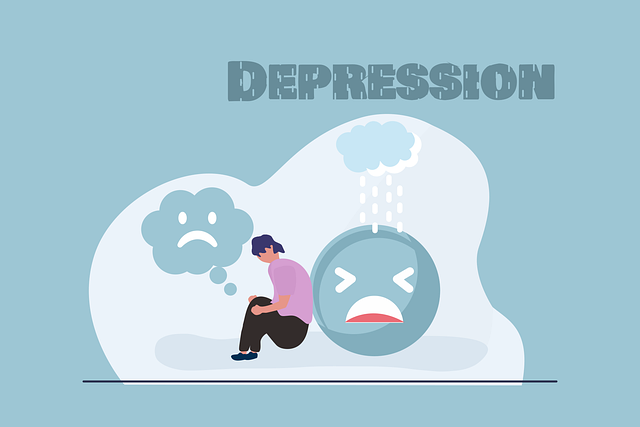Longmont Codependency Therapy enhances community well-being through targeted outreach programs that combine Compassion Cultivation Practices and Mind Over Matter principles. By assessing local needs, developing tailored initiatives, building partnerships, and offering continuous support, these programs foster emotional resilience and address codependency. Community engagement through collaborative efforts and public awareness campaigns amplifies impact, while KPI tracking and best practices integration ensure program success in Longmont.
Longmont Codependency Therapy (LCT) outreach programs play a pivotal role in community healing and growth. This article delves into the transformative power of these initiatives, offering a comprehensive guide for implementation, engagement, and evaluation. From understanding their fundamental role to practical strategies and success measurement, we explore how LCT can build partnerships, foster support, and create lasting positive change within the community. Discover effective approaches to enhance well-being and strengthen social bonds through impactful outreach.
- Understanding Community Outreach Programs: Their Role and Impact in Longmont Codependency Therapy
- Strategies for Effective Program Implementation: A Step-by-Step Guide
- Engaging the Community: Building Partnerships and Fostering Support
- Measuring Success and Continuous Improvement: Evaluating the Effectiveness of Longmont Codependency Therapy Outreach Programs
Understanding Community Outreach Programs: Their Role and Impact in Longmont Codependency Therapy

Community outreach programs play a pivotal role in enhancing Longmont Codependency Therapy’s effectiveness and accessibility. These initiatives extend therapeutic support beyond traditional settings, fostering connections with individuals and families who might otherwise face barriers to care. By integrating Compassion Cultivation Practices and Mind Over Matter Principles, community outreach not only addresses specific codependency issues but also cultivates resilience and emotional well-being.
Effective outreach often involves targeted Communication Strategies. Tailoring messages to resonate with diverse communities requires sensitivity and cultural competency, ensuring that therapy feels inclusive and relevant. Such personalized approaches empower individuals to take charge of their healing journeys while strengthening the community’s overall mental health and unity.
Strategies for Effective Program Implementation: A Step-by-Step Guide

Implementing community outreach programs effectively requires a structured approach to ensure success. Here’s a step-by-step guide tailored for Longmont Codependency Therapy, aiming to integrate mental wellness promotion techniques into local communities:
1. Needs Assessment: Begin by understanding your target community’s unique challenges and needs regarding emotional well-being. Conduct surveys or focus groups to gather insights on prevalent issues and existing resources. This step ensures that your program aligns with the community’s specific requirements.
2. Develop Tailored Programs: Based on the assessment, create diverse initiatives that cater to different demographics and interests. Incorporate activities like Mental Wellness Journaling Exercises to encourage self-reflection and personal growth. Consider producing a Mental Wellness Podcast Series to share expert guidance and real-life stories, making complex topics accessible to a broader audience.
3. Build Partnerships: Collaborating with local schools, community centers, or faith groups amplifies your reach. These partnerships can provide access to spaces, resources, and established networks, facilitating the distribution of Emotional Well-being Promotion Techniques to those who need them most.
4. Promote Participatory Engagement: Foster a sense of ownership by encouraging community involvement in program design and delivery. This could involve hosting workshops where residents contribute ideas for future events or inviting local influencers to share their mental health journeys, inspiring others to participate.
5. Provide Regular Guidance and Support: Offer ongoing support through one-on-one counseling sessions or group therapy meetings, ensuring individuals receive the necessary guidance to sustain their mental wellness journey. Regular check-ins can also help in tracking progress and making necessary adjustments to the program’s implementation.
Engaging the Community: Building Partnerships and Fostering Support

Engaging the community is a vital step in implementing successful outreach programs, especially for initiatives like Longmont Codependency Therapy. Building partnerships with local organizations, schools, and community centers creates a network of support that can amplify the impact of therapy services. By fostering collaboration, these partnerships enable joint efforts to raise public awareness campaigns about codependency and its effects on individuals and families. This collaborative approach not only increases accessibility to therapy but also promotes positive thinking and burnout prevention within the community.
Community members become active participants when they see local leaders and institutions backing the cause. This involvement can take various forms, from hosting informational sessions to volunteering for outreach events. Such initiatives not only spread awareness but also create a safe space for open dialogue about codependency, breaking down barriers and stigma associated with seeking therapy. Encouraging community support ensures sustained momentum in addressing mental health challenges and fostering resilience among residents of Longmont.
Measuring Success and Continuous Improvement: Evaluating the Effectiveness of Longmont Codependency Therapy Outreach Programs

Measuring success is an integral part of evaluating the effectiveness of Longmont Codependency Therapy outreach programs. To ensure positive outcomes, regular assessments should be conducted to gauge the impact on the community. This involves tracking key performance indicators (KPIs) such as the number of individuals reached, program attendance rates, and participant feedback. By analyzing these metrics, mental health professionals can identify areas of strength and weakness, allowing for continuous improvement in their outreach initiatives.
A comprehensive approach to risk management planning for mental health professionals is essential. In light of this, integrating best practices from Mental Health Policy Analysis and Advocacy can enhance the overall success of Longmont Codependency Therapy programs. For instance, addressing systemic barriers to care and promoting depression prevention strategies within the community can foster a more supportive environment, leading to better outcomes for those seeking therapy.
Community outreach programs play a pivotal role in extending the benefits of Longmont Codependency Therapy, fostering support networks, and achieving lasting positive change. By implementing effective strategies, engaging key stakeholders, and measuring success through careful evaluation, these initiatives can revolutionize access to care and improve lives within the community. Remember that continuous improvement is essential, ensuring outreach programs remain dynamic and responsive to evolving needs.














